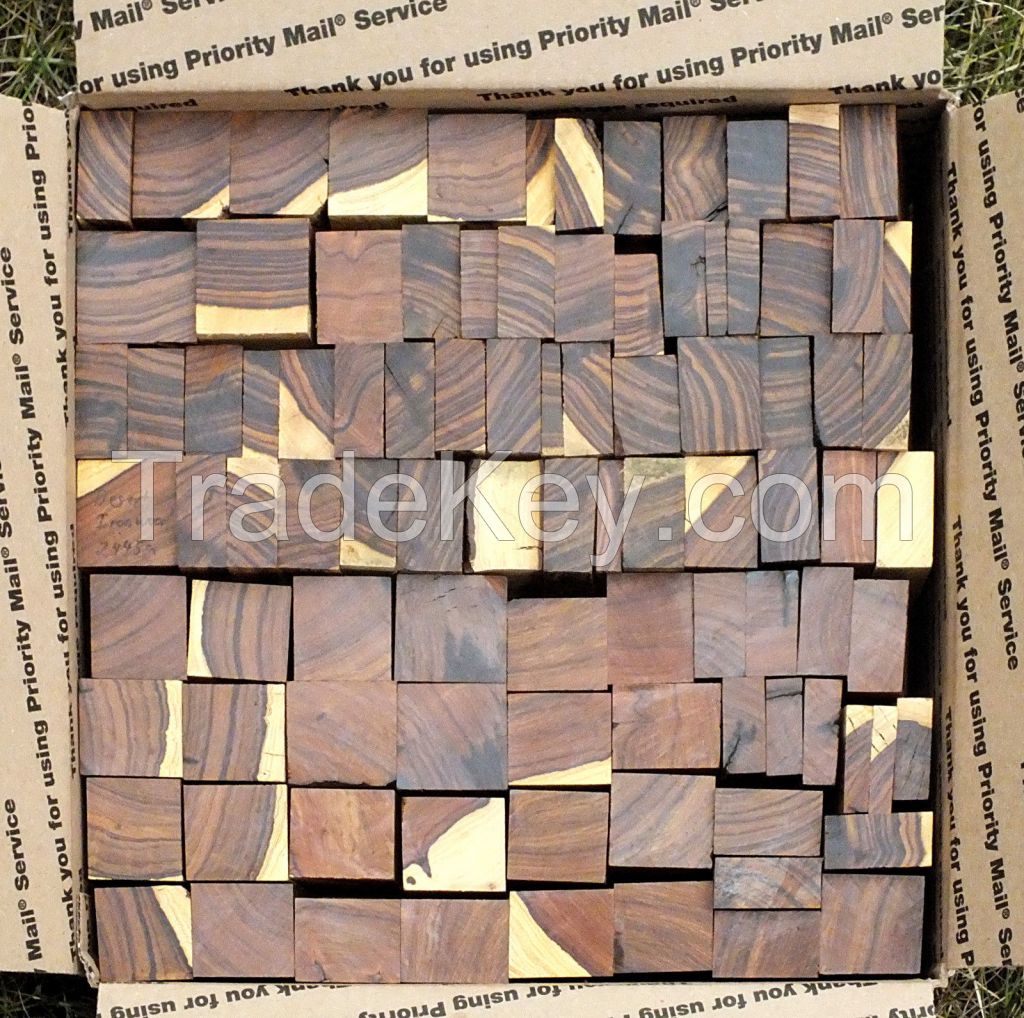Description
Desert ironwood knife blanks & scales
enough wood for ******0 knife handles!!
You can buy one full, large box of mixed desert ironwood knife
handle blanks.
The dimensions of an average single sized blank are:
5" x 1 1/2" x 7/8"
notes:
mix contains single & double sized blanks, scales, and
thins.
All surface blemishes are very shallow and are expected to
disappear during the shaping of
the knife handle. This wood is rare and expensive, so i try
to maximize its use and minimize waste.
This rare wood has been ethically harvested.
janka hardness rating: ***0
(maple is much softer with a rating of about ***0)
note: because of the extreme age (**0 to **0 years) and hardness of
the wood,
cracks and degraded areas are the norm throughout a desert ironwood
log. Thus, good
pieces of wood must be carefully and creatively cut out from
between the defects in the source wood.
Typical recovery from a good tesota log is often 1 part good wood
to 3 or 4 parts waste!!
Thus, i sell tesota wood with a few defects in it. If i cut
out all the defects, i would end
up with less half of the wood to sell and prices would have to be
twice as high!
True desert ironwood, olneya tesota, is almost unbelievably heavy
and hard for a wood. It will not float and is very hard to work
with hand tools (except when green)
but it is gorgeous and takes a fabulous finish when worked
carefully
and slowly with very sharp power tools.
Color/appearance: heartwood color ranges from an orangish yellow to
a darker red or brown, with
darker violet to black streaks. Some pieces may be almost entirely
black. Yellow sapwood
is clearly demarcated from heartwood.
Grain/texture: due to the small size of the tree, grain can be wild
or gnarled.
Fine even texture and excellent natural luster.
Workability: very difficult to work on account of its density. High
cutting resistance.
Desert ironwood is usually restricted to very small projects,
though it takes a good
natural polish and is very stable in service. Turns, polishes, and
finishes well.
Odor: desert ironwood has a distinct, sometimes unpleasant smell
when being worked.
Allergies/toxicity: while there are no official studies available
for desert ironwood,
anecdotal reports suggest that the sawdust can be irritating
to
the skin and respiratory system.
Pricing/availability: the small size of the tree—in combination
with its frequent branching,
frequent cracks center rot, and degraded areas, restricted
distribution and relative rarity
—means that desert ironwood is in scarce supply. Expect
prices to be extremely
high for a domestic hardwood, or par with many high-end exotic
imported
hardwoods. Usually seen as turning or knife blanks, also sold as
whole logs.
Sustainability: this wood species is not listed in the cites
appendices or on the iucn red list
of threatened species. Yet, due to its recent high appeal and
limited availability,
its harvest on public lands has been severely curtailed,
making
harvesting on private lands the primary current source.
Common uses: knife handles, carvings, and turned objects.
Comments: desert ironwood is perhaps one of the most
highly-regarding of all woods
in knife-making, with its density, stability, grain patterns and
colors creating
a unique combination of characteristics thats ideal for decorative
handles.
Information taken from:
*-hobbithouseinc.com
*-the wood database
*-various other sources
give this beautiful and highly prized, grown in america wood a
try
